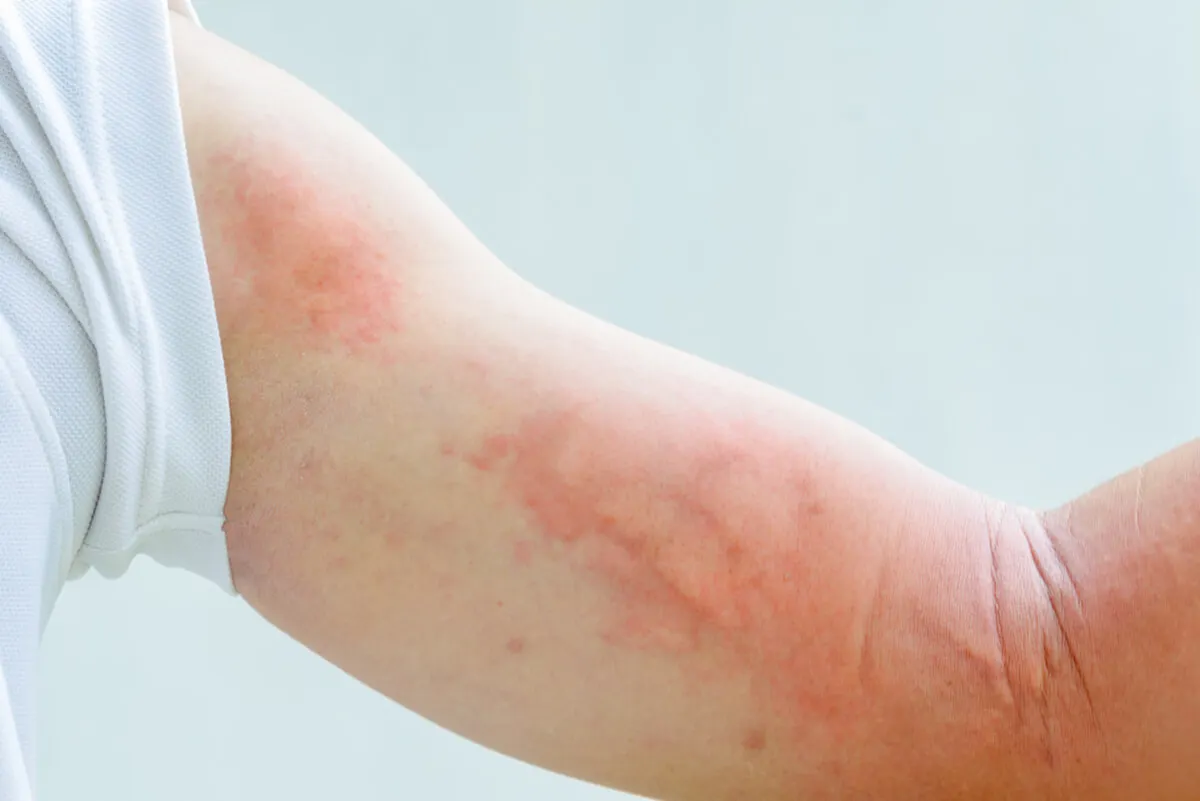Mottled Skin: What Is It and What Causes It?


Reviewed and approved by the nurse Leidy Mora Molina
Mottled skin is a skin condition in which the skin is covered with patches that can be either reddish, bluish, or purple. It most commonly appears on the legs, but can also appear on the arms or upper body.
With mottled skin, the patches usually have a lattice or grid-like pattern. However, the appearance can vary. Sometimes the same reticule is seen, but underneath the skin, and sometimes only a spot is visible.
This condition is also known as livedo reticularis. Science doesn’t know the exact reasons why this anomaly occurs. It’s believed that in many cases it could be a side effect of some drugs or a symptom of some pathologies.
What are the causes of mottled skin?

Although there’s no conclusive data, a relationship has been found between mottled skin and some pathologies, of which it is a symptom. It’s also known to affect middle-aged women in particular, but also younger women and newborn babies. It’s also associated with the following conditions.
Lupus
Lupus is an autoimmune, inflammatory disease in which sunlight can cause skin rashes. The most characteristic of these is a butterfly-shaped outbreak that appears on the face.
Lupus can result in mottled skin. This symptom is accompanied by others such as pain, swelling, fatigue, fever, dry eyes, stiffness, and respiratory problems. Fingers and toes turn blue in cold weather.
Rheumatoid arthritis
Rheumatoid arthritis is also an autoimmune disease, whose characteristic symptom is inflammation of the joints. In many cases it results in mottled skin, as it affects the blood vessels. Other symptoms include low-grade fever, fatigue, stiffness and pain lasting more than 30 minutes, anemia, lumps or nodules, etc.
Poor circulation
It has been established that there’s a link between poor circulation and livedo reticularis. This is because if there’s a lack of oxygenated blood, rich in hemoglobin, the result can be skin discoloration.
Hypothyroidism
The thyroid gland produces hormones that influence the rate of metabolism. If it’s underactive, it may cause depression, fatigue, and weight gain. Mottled skin is known to be one of its symptoms.
Antiphospholipid syndrome
Also known as Hughes syndrome, this is an autoimmune disease that causes circulation problems, blood clots, and leg ulcers. Its most characteristic symptom is mottled skin. It affects especially young and middle-aged adults.
You may also be interested in: Red Spots on the Skin: 25 Possible Causes and Treatments
Pancreatitis
Pancreatitis is the inflammation of the pancreas. It causes severe abdominal pain, nausea, and vomiting. Three days after the onset of symptoms of this condition, mottled skin may appear. It is, therefore, considered a secondary symptom of the condition.
Concussion
Concussion is a medical emergency caused by trauma, burns, poison ingestion, blood loss or infection. In addition to mottled skin, it causes shortness of breath, increased heart rate, dizziness, nausea, vomiting, weakness, fainting, rapid breathing, and enlarged pupils.
Other
Sometimes newborn babies have mottled skin, but it goes away on its own. Babies sometimes have it as a reaction to cold. Hence the importance of keeping them warm.
In older adults, mottled skin may appear shortly before death. It is usually accompanied by difficulty swallowing, delirium or unconsciousness, refusal of food and water, extreme weakness or fatigue, difficulty breathing, and a reduced heart rate.
When is it necessary to consult a physician?
Most commonly, mottled skin disappears on its own. However, there are circumstances in which this doesn’t occur and these warrant a consultation with a physician. Such circumstances may be one or more of the following:
- Warming or heating the body doesn’t make the mottled skin disappear.
- Other symptoms accompany this condition.
- Painful nodules appear in the affected area.
- Ulcers appear on the affected skin.
- There are peripheral vascular diseases.
- In lupus, or similar diseases, a new area of mottled skin appears.
How is it diagnosed?

As noted above, when the mottled skin doesn’t disappear on its own or is accompanied by other symptoms, it is best to consult a doctor. It’s best to detect and report all associated symptoms.
From the initial appointment and perhaps an initial examination, the physician may order a series of tests to establish the cause of the condition. These may include blood tests, ultrasound scans, etc.
How can mottled skin be treated?
Treatment will depend on the cause. If the cause is an autoimmune disease, drugs that control the immune response and thus reduce inflammation will usually be prescribed.
If the cause is pancreatitis, anti-inflammatory drugs, and intravenous fluids will be prescribed. If the cause is concussion, emergency treatment will be given.
A healthy lifestyle may be the best treatment, when no other disease is present. Regular exercise, avoiding stress, and not smoking help control this condition. Keeping warm also helps.
Don’t miss: A Psoriasis Diet to Reduce Some Symptoms
Can mottled skin be prevented?
If mottled skin is a primary condition, i.e. not associated with another disease, the best way to prevent it is to keep warm, especially the legs.
Exercise and a healthy diet also help prevent circulatory problems. Avoiding smoking and stressful situations helps to prevent this condition.
Mottled skin may be a symptom of another condition
As we have seen, it isn’t a disease in itself. However, it’s possible that in some cases it may be a symptom of an underlying pathology. Therefore, it’s advisable not to overlook this symptom, especially if it’s frequent.
As with any condition, the earlier it is detected and treated, the better. It’s best to consult a physician if this problem occurs frequently or doesn’t go away on its own.
All cited sources were thoroughly reviewed by our team to ensure their quality, reliability, currency, and validity. The bibliography of this article was considered reliable and of academic or scientific accuracy.
- Sánchez, A. C., & Aranda, J. A. G. (2012). Pancreatitis aguda. Boletín médico del Hospital Infantil de México, 69(1), 3-10.
- Ortiz, M. I., & Murguía, G. (2013). Conmoción cerebral asociado a un traumatismo craneoencefálico en los deportistas. Medwave, 13(01).
- Estrada, V. M., & Fonseca, A. O. (2005). Educación Médica Continua Livedo reticular. Revista del Centro Dermatológico Pascua, 14(3).
This text is provided for informational purposes only and does not replace consultation with a professional. If in doubt, consult your specialist.








